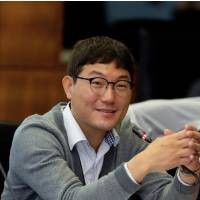Next up
Astronomical Telescopes and Adaptive Optics
Continuing in
Astronomical Freeform Optics
This is a preview of subscription content
Your browser needs to be JavaScript capable to view this video
Try reloading this page, or reviewing your browser settings
Next generation space and ground based astronomical optics are bringing about exciting developments in our scientific understanding of the Universe in which we live. Over 1,000 ton giant astronomical telescope systems coupling diffraction-limited spatial resolution with unprecedented photon collection power will be one of the most powerful scientific investigation tools.
These precision optics are efficiently fabricated using a computer controlled optical surfacing (CCOS) technology. Also, to build the next generation of telescope optics, new metrology methods and tools have been developed. Various dynamic manufacturing technologies including active shape-control Stressed lap, non-Newtonian fluid lap, next generation space and ground based astronomical optics, and adaptive optics concept are explained with real-world examples and recent R&D results.
This video is intended for optical engineers, optical scientists, engineering students, and astronomers, who are interested in large optical manufacturing and system technology.
Introduction
This video highlights the fabrication of next generation precision optics for astronomical telescopes, and presents new metrology methods, tools and manufacturing technologies for astronomical optics along with real-world examples
About The Author

Dae Wook Kim is an assistant professor of optical sciences and astronomy at the University of Arizona. He received Bachelor’s degree in Physics and Astronomy from the Yonsei University in South Korea. He got his Master’s and PhD degrees from the Wyant College of Optical Sciences at the University of Arizona. He has been working in the field of optical engineering for more than 10 years, mainly focusing on very large astronomical optics, such as the 25 m diameter Giant Magellan Telescope primary mirrors. His research area spans precision freeform optics fabrication and various metrology options, such as interferometric test systems using computer generated holograms, direct curvature measurements, and dynamic deflectometry systems. He is the chair of SPIE’s Optical Manufacturing and Testing conference, SPIE’s Astronomical Optics: Design, Manufacture, and Test of Space and Ground Systems conference, and OSA’s Optical Fabrication and Testing conference. He has published over 100 journal/conference papers, is a senior member of both SPIE and OSA, and has served as an associate editor of OSA’s Optics Express journal.
About this video
- Author(s)
- Dae Wook Kim
- DOI
- https://doi.org/10.1007/978-3-030-57790-2
- Online ISBN
- 978-3-030-57790-2
- Total duration
- 37 min
- Publisher
- Springer, Cham
- Copyright information
- © Springer Nature Switzerland AG 2020
Related content
Book
- Jingquan Cheng
Book
- Raymond N. Wilson
Book
- Pierre Léna
- Daniel Rouan
- François Lebrun
- François Mignard
- Didier Pelat
Video Transcript
Hello, my name is Dae Wook Kim. I am an assistant professor of optical sciences and astronomy at the University of Arizona. We will learn about and talk about astronomical free from optics, fabrication, and testing.
Let me introduce my background. I’m a principal investigator and scientist for projects that develop and implement advanced technologies for building and testing large optical systems and astronomical telescopes. I have been working in the optical engineering field for more than 15 years, and mainly focused on very large astronomical optics, such as 25 meter giant Magellan telescope, and 4.2 meter Daniel K. Inouye Solar Telescope project.
My main research area has been over the precision optics manufacturing and fabrication field. I have been also working on various optical metrology topics, such as interferometric tests using computer generated holograms, direct curvature measurement method, and deflectometry systems. I am also a teacher who loves to teach and share. I teach graded courses, optical testing, optical mechanical engineering, and fundamentals of applied optics laboratory at the University of Arizona.
I have published more than 100 journal articles and conference proceedings. Based on my experience and knowledge, in this video, I will present advanced technologies for astronomical optics fabrication, testing, and, finally, the entire manufacturing process.
We will begin our journey by talking about the concept of time travel in astronomy. If you take a photo or a video of the sun outside your home, you just time traveled about nine minutes. A photon or light leaving the surface of the Sun will arrive Earth’s and your camera in about nine minutes. This is due to the finite speed of light in space.
We can expand the concept of time travel to an extreme case. What if you are taking a photo of stars and galaxies 100 light years away? You will see the image of them as they were 100 years ago. The Hubble Space Telescope tried this by taking a photo of a small section in the sky of pure darkness. After a very long exposure, known as Hubble ultra deep field, there were countless galaxies and stars. They are 13 billion light years away. So very faint and small. However, this is how you can image and study when the universe just began through big bang.
The challenge is that an hour long exposure using Hubble space telescope only collects a few photon energy on the detector. Simply, scientists need more and larger telescopes.
As of today, year 2020, mankind has the single mounted, large optical telescope with two 8.4 meter in diameter primary mirrors moving together on its optomechanical structure. The telescope is located in Tucson, Arizona and called the Large Binocular Telescope, LBT.
Its 8.4 meter in diameter light weighted, honeycomb primary mirror is the largest single optical component in human history and weighs only about 20 tons. This is one of the most powerful scientific time machines of 2020.